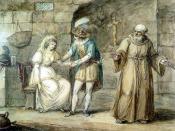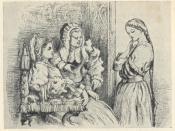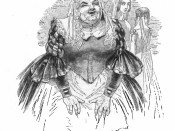Romeo and Juliet - Zeffirelli and Luhrmann
The two main film interpretations of Shakespeare's "Romeo and Juliet" are Zeffirelli's, made in 1968, and Luhrmann's, made in 1997. Although they use the same original script written by Shakespeare, these two films are very different. Zeffirelli's is set in the 16th century, at the time when the screenplay would have first been written whereas Luhrmann has set his film in modern time but still using the Shakespearian language. The most popular and well-known scene of "Romeo and Juliet" is the balcony scene where Romeo and Juliet first declare their love for each other.
Luhrmann's version of the balcony scene is started with a shrill crash as Romeo enters the Capulet's house and knocks a post to the ground. This gains the audiences attention immediately for the scene. Romeo's movements are clumsy and speech is fast-paced and raspy. Romeo escapes outside and awkwardly attempts to climb a vine below Juliet's window.
The camera pans out frequently to show the view of their entire Capulet estate, this shows the importance of where they are as it's a forbidden area for Romeo to be. Romeo's inept actions put a brief comical twist into this classic tragedy. From Juliet's window, a small figurine of the Virgin Mary can be seen for a short time through the curtains. This has a strong symbolic meaning, showing the contrast between Romeo and Juliets sexual intentions and a sense of purity and religion. It could also be a symbol of warning meant for Romeo and Juliet. When Juliet is first seen in the Lurhmann version, she is the complete opposite of Romeo. Juliet is wearing a flowing white dress, signifying her innocence and inexperience; she delicately exits an elevator and begins to speak her lines with full use of facial...


